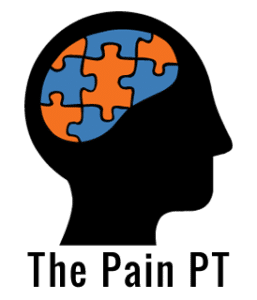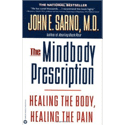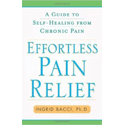The Brain and Nervous System Approach
The Brain and Nervous System approach to eliminating chronic pain and other chronic health disorders is evidence-based and supported by scientific research (like this). It is about treating the underlying brain and neural mechanisms that drive many problems like chronic pain, fibromyalgia, chronic fatigue, IBS, and many other health disorders. Dr. Sarno was a physician at NYU Medical Center and clearly ahead of the curve in treating these disorders when he started diagnosing what he called TMS or tension mysositis syndrome in the 1980’s. Treating the source of symptoms means treating you as a whole person and not just as a bag of bones and tissues. You need to think more globally and understand the one system that feeds every part of the body: the brain and nervous system. The brain and nervous system work beneath the radar all the time, hence it mostly escapes our conscious awareness. It sends and receives messages from all body parts and all systems (circulatory, immune, skeletal, excretory, muscular, endocrine, digestive, and respiratory) so there can be a wide variety of health disorders beyond pain that are influenced and driven by the brain and nervous system.
There are many studies now supporting the brain and nervous system connection. One of my favorite studies that demonstrates the chronic pain-brain connection came out of Northwestern University in 2012. The researchers were able to predict with 85% accuracy at the onset of acute pain who would still have low back pain a year later. This was not done by looking at X-rays and MRI’s (which by the way are poor predictors of pain, but by taking brain scans at the beginning of the study and then again one year later. On the brain scans, they found those who developed chronic pain had certain sections of their brains that were overactive compared to those who recovered from acute pain. These sections were related to emotional processing, our thoughts, and motivational behavior. The brain scans of the chronic pain group also showed lost neuron connections and shrinkages in some parts of the brain matter. The author of this study states: “The injury by itself is not enough to explain the ongoing pain. It has to do with the injury combined with the state of the brain. This finding is the culmination of 10 years of our research.”
This approach is similar to exercising your body but we will be working out your brain and nervous system instead. How do we work with the brain and nervous system to eliminate pain and other mind-body health disorders? We have to consciously change how we think, feel, and behave around pain and other symptoms. All of our thoughts, beliefs, emotions, and behaviors are real neural signals from the brain that ripple through the body. The brain has 85 billion neurons that complete upwards of five trillion chemical reactions each second, at speeds of over 260 miles per hour. Being the most powerful organ in the body, the brain really is a supercomputer. The key to this approach is to consciously re-program the supercomputer (brain and nervous system) to work for you instead of against you.
Just as most computers are programmed and work automatically, the brain and nervous system operate the same way. The brain and nervous system become programmed by your life events beginning from the day you are conceived up to the present moment. A computer automatically runs it programs behind the scenes just as you automatically breathe, digest food, move blood around the body, and carry out many other functions unconsciously. If you have had in your life or have now any mental, emotional, or physical traumas or stresses, your brain and nervous system automatically learns to overprotect you. This part of the nervous system (autonomic) is like an old rudimentary computer. It only knows two things, safety and danger. When the brain perceives any danger, it switches into protection mode and automatically without your conscious consent, turns on a host of biochemical reactions that affect all systems of your body (circulatory, immune, skeletal, excretory, muscular, endocrine, digestive, and respiratory). Here are just a few signs and symptoms that an overprotective nervous system is at work: poor digestion/indigestion (IBS, colitis, eating disorders), constipation, anxiety and worry, shallow breathing (chest breathing), increased heart rate, poor quality sleep, restlessness, night sweats, decreased libido, fatigue, nervousness, increased agitation/irritability, increased muscle tension (chronic pain & fibromyalgia, headaches, TMJ), increased inflammation, increased susceptibility to infections, etc. You can end up with many different symptoms, chronic pain being just one of them.
What many people don’t realize is the brain and nervous system can get stuck in protection mode when current and past mental, emotional, or physical traumas or stresses (dangers) have not been resolved. The brain and nervous system also become more sensitized with every stress that occurs in your life and the longer you’ve had your condition the more sensitive and reactive it becomes to protect you from what it perceives as dangerous. In essence, the brain and nervous system become conditioned to overprotect you. Overprotection over time results in a host of physical health conditions and symptoms that don’t go away. When you work with me, you will learn much more about what has conditioned your brain and nervous system to overprotect you and contribute to your symptoms. I will teach you how to change your conditioned patterns so your brain and nervous system can learn to feel safe, instead of being turned on to protect you from perceived dangers.
The keys to success in this treatment is to understand, accept, and realize your chronic condition is not an issue originating from damaged tissues but one coming from an oversensitive and overprotective brain and nervous system. You need to let yourself know that you are safe and not in danger. This will allow your unconscious brain and nervous system to relax and start to send the right messages into your body that you are OK. We already know that physical tissue changes do not correlate with chronic pain and other symptoms. Otherwise everyone who ages would be in severe pain as they got older. It just isn’t the case. And there are many other conditions like fibromyalgia, chronic fatigue, IBS, etc. where doctors can’t find anything wrong. That’s because the problem lies mainly in the messaging from the brain and nervous system.
I will be working a four step treatment process with you. Here are the steps below:
- UNDERSTAND AND ACCEPT THE CAUSE OF YOUR SYMPTOMS: Learn about the latest in neuro-science and the evidence that supports the role of the brain and nervous system in chronic pain and other chronic health disorders. This evidence has not seeped into mainstream medicine yet. After I gather detailed information from you on the initial evaluation, I will be able to determine if your chronic condition is due to an oversensitive and overprotective brain and nervous system. Once that has been diagnosed, the first step to healing is to realize and accept that the brain and neural pathways are the main contributors to your symptoms, not tissue damage. This a huge first step because it opens the possibility of getting better and completely changes the messaging in your brain and nervous system from one of danger and no hope to one of safety and hope. This is crucial because if you still buy into your symptoms that something is wrong and continue to believe that tissue damage is the cause of your problems, you’ll never get out of the cycle of danger and overprotection.
- LEARN TO SEND SAFETY MESSAGES TO YOUR NERVOUS SYSTEM: The brain and nervous system will need to learn to relax so that you can feel safe versus it subconsciously thinking it’s in danger. I will work with you to send desensitizing safety messages into your body. We will look together at three categories (mental, emotional, physical) of messaging that contribute to and keep an overprotective brain and nervous system going. The mental category is your core beliefs and the possible negative thought processes that can coincide with pain and other chronic health conditions. I will work with you on what emotions and feelings the pain or other symptoms bring up for you ( the brain shifts to emotional circuits with chronic pain). Many people have a hard time expressing and feeling their emotions and this can keep the brain and nervous system in a sensitive and over-reactive state. It is important to note the brain processes emotional, social, and physical pain in similar ways and many of the same areas of the brain that light up in physical pain also light up in emotional pain. The last category is physical messaging and I will teach you two very important things here. One is to learn to detach and openly feel any physical symptoms that arise so that you can break the neurological pattern of protection and teach the nervous system these symptoms are not dangerous. The second important thing I will teach you is to learn how to physically relax your body and its unconscious holding and muscle tension patterns. Most people are not aware they are overprotecting and guarding the areas where they have pain or other symptoms. Muscle tension and guarding limit the body’s ability to heal so it is important to identity and correct these patterns.
- LET GO OF ONGOING STRESS: I mentioned earlier how stressful events in childhood, adulthood, and around the time the symptoms started are linked with the development chronic physical symptoms. There may be a need to learn how to let go of these stresses to allow your nervous system to fully relax and heal. A lot of times people don’t realize the pressures of life and how they deal with them have a direct impact on the body and how it feels. Learning how to move from a sympathetic fight or flight state to a parasympathetic rest and digest state makes a big difference in how you feel.
- ACTIVITIES OF DAILY LIVING: This is the last step is an important one in the process of getting your life back. I will help you gradually return to the activities you stopped because of your pain or other chronic health problems. What is it you have been avoiding or stopped doing because of your symptoms? I will work with you to identify what these things are and move towards them with feelings of safety instead of fear and danger. Getting active physically or challenging the very things that bother you is important to recovery, as it teaches your brain and nervous system it is ok to resume the very things you have been avoiding.
How long does the recovery process take? I get this question often and it really does vary. I have seen some people have miraculous recoveries in a short amount of time, as the brain is plastic and can change quickly. However, on average, after 1-3 months of treatment, you should see changes in your symptoms and a return to the things you want to do. This is a short amount of time to invest if you’ve been dealing with chronic pain, fatigue, fibromyalgia, etc. for months or years.
Through this work, I can attest to patients overcoming their symptoms and getting their lives back. The process works if you make a commitment to put in the effort and time. It’s like learning a new language or learning to play an instrument, you have to practice it again and again until it sticks. The same applies here with changing the habits and patterns of the brain.
I can tell you there is hope to feel better, you just need to start on the road to recovery, step by step!







